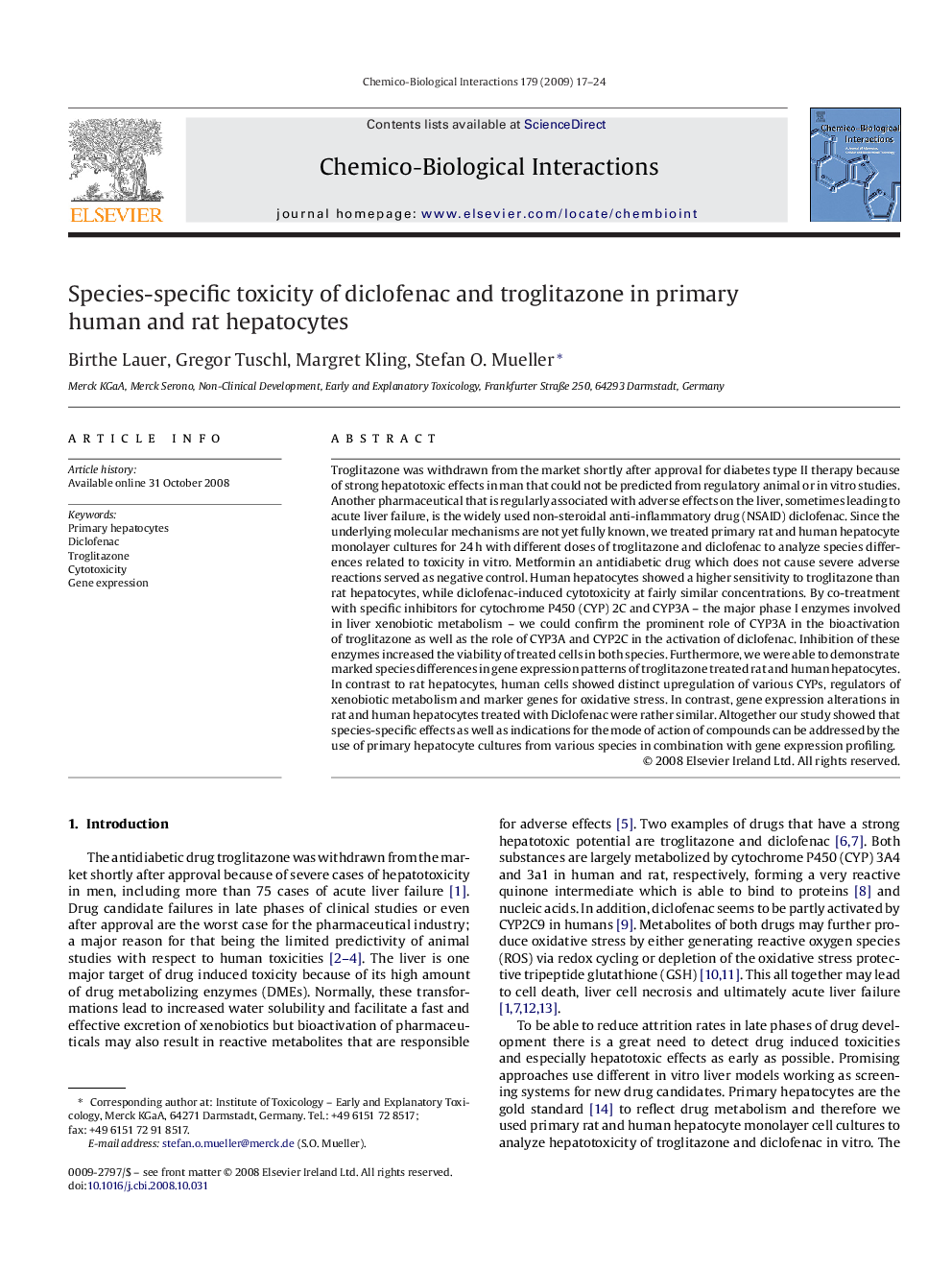| Article ID | Journal | Published Year | Pages | File Type |
|---|---|---|---|---|
| 2581385 | Chemico-Biological Interactions | 2009 | 8 Pages |
Troglitazone was withdrawn from the market shortly after approval for diabetes type II therapy because of strong hepatotoxic effects in man that could not be predicted from regulatory animal or in vitro studies. Another pharmaceutical that is regularly associated with adverse effects on the liver, sometimes leading to acute liver failure, is the widely used non-steroidal anti-inflammatory drug (NSAID) diclofenac. Since the underlying molecular mechanisms are not yet fully known, we treated primary rat and human hepatocyte monolayer cultures for 24 h with different doses of troglitazone and diclofenac to analyze species differences related to toxicity in vitro. Metformin an antidiabetic drug which does not cause severe adverse reactions served as negative control. Human hepatocytes showed a higher sensitivity to troglitazone than rat hepatocytes, while diclofenac-induced cytotoxicity at fairly similar concentrations. By co-treatment with specific inhibitors for cytochrome P450 (CYP) 2C and CYP3A – the major phase I enzymes involved in liver xenobiotic metabolism – we could confirm the prominent role of CYP3A in the bioactivation of troglitazone as well as the role of CYP3A and CYP2C in the activation of diclofenac. Inhibition of these enzymes increased the viability of treated cells in both species. Furthermore, we were able to demonstrate marked species differences in gene expression patterns of troglitazone treated rat and human hepatocytes. In contrast to rat hepatocytes, human cells showed distinct upregulation of various CYPs, regulators of xenobiotic metabolism and marker genes for oxidative stress. In contrast, gene expression alterations in rat and human hepatocytes treated with Diclofenac were rather similar. Altogether our study showed that species-specific effects as well as indications for the mode of action of compounds can be addressed by the use of primary hepatocyte cultures from various species in combination with gene expression profiling.
